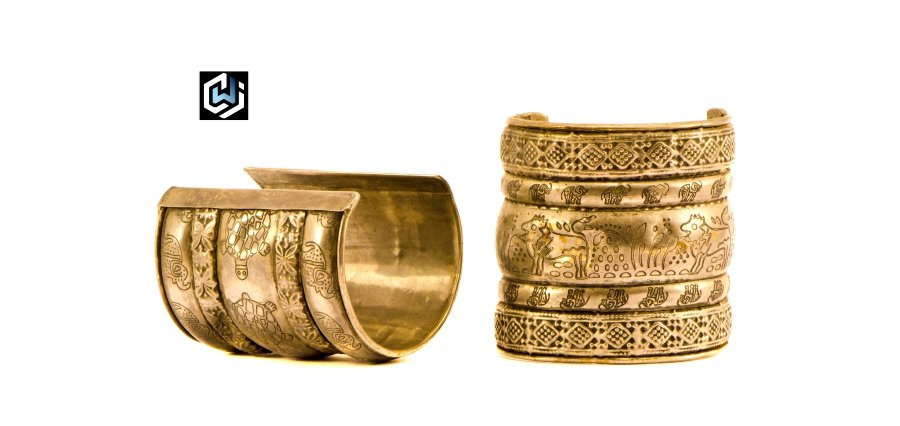Knowing Jewellery Past
In reality, it is more than adornment; it is an intrinsic part of culture and tradition, of spirituality and artistry. However, the Indian jewellery tradition has a historical backdrop that goes back more than 5,000 years and very well describes a country evolving from the grandeur of the empires to the craftsmanship of the artisans and from the cultural values that have endured the test of time.
The Beginning of Jewels in India
The history of Indian jewelry originates from the Indus Valley Civilization (approximately 3300-1300 B.C.). Excavations done in Harappa and Mohenjo-Daro show those ancient ornaments fashioned out of gold, silver, copper, and semi-precious stones such as carnelian, agate, and lapis lazuli. Beyond aesthetic senses, these showcase how advanced metallurgical skills had already been developed during that period.
Jewelry was for neither a particular gender nor a class; both men and women adorn necklaces, earrings, bangles, and anklets. Jewelry, to use the word loosely, as a symbol of status or wealth, was part of the tradition when these dynasties saw an end to their rule.
Jewellery Across Dynasties
However, it was during the Mauryan and Gupta periods that Indian jewelry reached its apex-the golden age when ornaments carved out of gold and inlaid with rubies, emeralds, sapphires, etc., were produced. It was also during this period that techniques such as filigree and granulation were introduced into the empire.
However, the Mughal era is best remembered as the one of the most prosperous times for Indian ornamentation. The Mughals, having a very refined taste and living in the Persian cultures, brought into gold ornamentation very rich influences into Indian-crafted work. Very elaborate designs with floral motifs were used, embraced by vivid enameling with an extensive use of diamonds and pearls.
Jewellery through Dynasties
By the Rajput and Deccan dynasties, implications of the region were reflected in the jewellery styles. For example, the royals of Rajasthan preferred polki and kundan jewelry, while the Nizam of Hyderabad adored diamonds and pearls.
Symbolism and Cultural Importance
Jewelry has deep cultural and symbolic meanings in India: it forms an integral part of all the religious and social celebrations, embracing rites of passage.
Religion and Spirituality: Most jewelries have religious meanings, such as mangalsuthra and toe rings. Mangalsuthra signifies a marriage bond in Hinduism. Temple jewellery is mostly worn by classical dancers who derive their inspirations from the deities.
Life’s Passage: Jewelry marks all life’s milestones-from birth through marriage and beyond. Gifting of gold at a marriage is viewed as something for prosperity and security.
Protection and the actual healing: In ancient times, ailment and protection were believed to be possessed by some gemstones. Navaratna is said to bring prosperity to the user and to balance the various cosmic energies into a good fortune.
Craftsmanship and Regional Diversity
Different regions of India give rise to unique jewellery styles, which also pertain to their own craftsmanship and elements of design.
Kundan and Polki: These belong to Rajasthan and involve cut diamonds or gemstones made into gold. Meenakari: Bright enameling is well known for this ornamental form and is renowned in Jaipur. Temple Jewelry: These are made in Tamil Nadu, and gold jewelry designs are highly influenced by temples and their architecture. Work in Filigree: Jakarta and West Bengal are artisans enlightening with delicate silver designs in filigree. Bead Jewelry: The manipuri and naga communities are popular for their colorful beadworks.
Transformation of Indian Jewel
Only a few traditional jewellery remained evergreen; likewise, the trendiest moderns have marched through their own ways into contemporary aesthetics-where wispy works, minimalistic pieces, and strange materials like platinum brush shoulders with younger generations.
Modern design is, though, flavored with vintage distinctiveness. In order for India’s heritage jewelry to survive now and for posterity, artisans put some traditional techniques in a contemporary way.
Jewelry as a Symbol of Status and Investment
Gold jewelry is synonymous for ages with two meanings, especially wealth and status in India. It is not only affluence that is represented here but also a form of financial security. Most families invest their savings into gold to hedge against inflation and so that no economic uncertainties will crush those gold investments.
Recently, the diamond and gemstone markets have also flourished in terms of sales, as consumers prefer the purchase of certified, conflict-free stones.
Collecting Voice
There are steps being taken towards preserving and promoting the heritage of Indian jewelry. Developments like government initiatives, exhibitions, and collaborations between designers and traditional artisans have worked to keep
A Grand Ornamental Finale
The history of jewelry in India is rich in culture and art. From the ancients of Harappa, through the splendors of the Mughal era, to the fusion of modern times between the two, Indian jewelry will ever keep its hold on the world. Jewelry goes beyond the simple accessory; it is a rich expression of one’s identity, culture, and craftsmanship in which India maintains a full part in its story.





